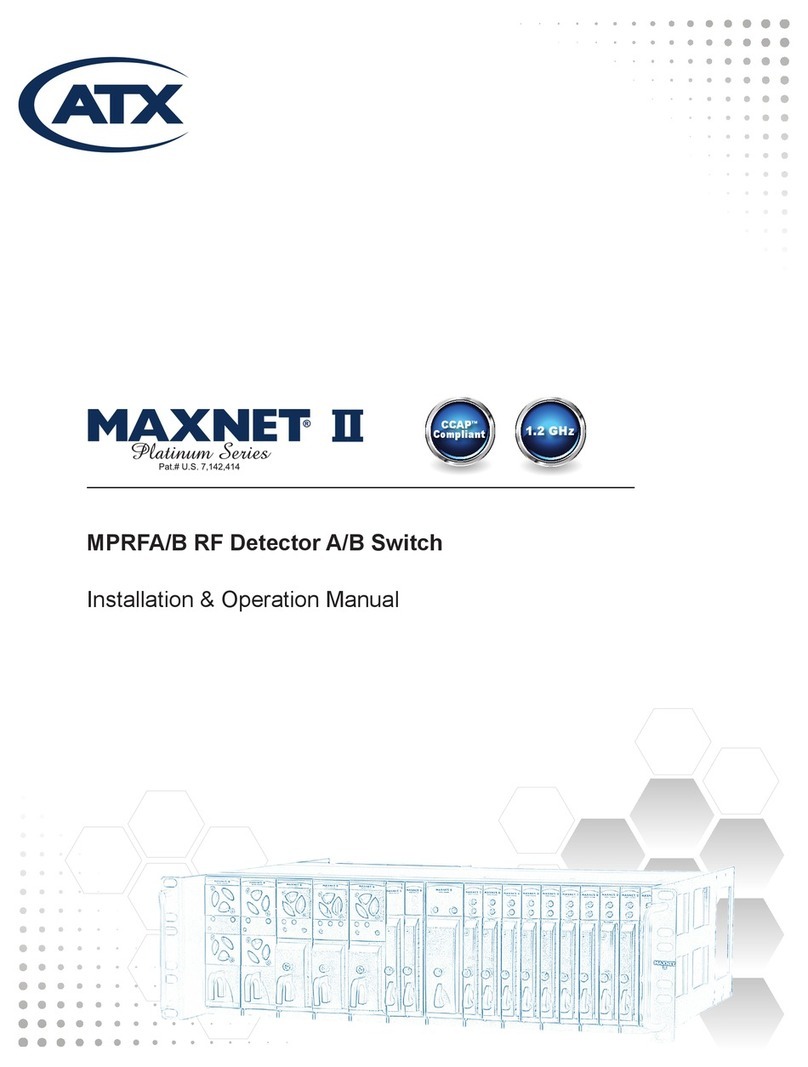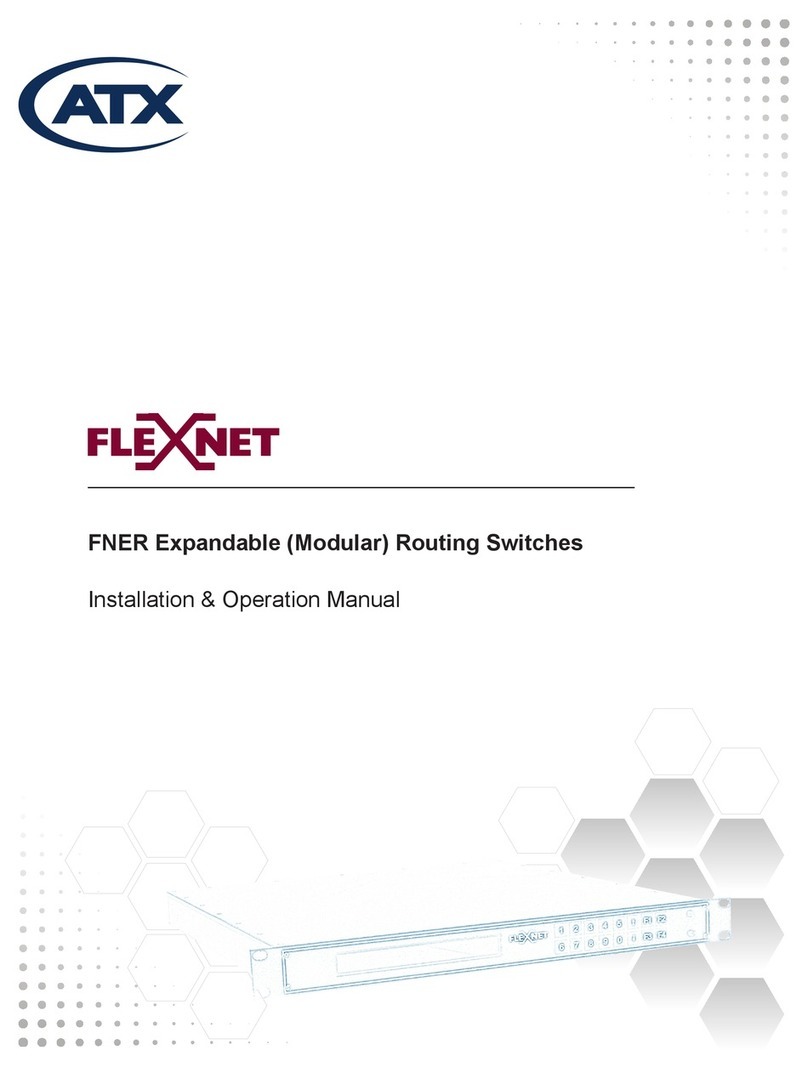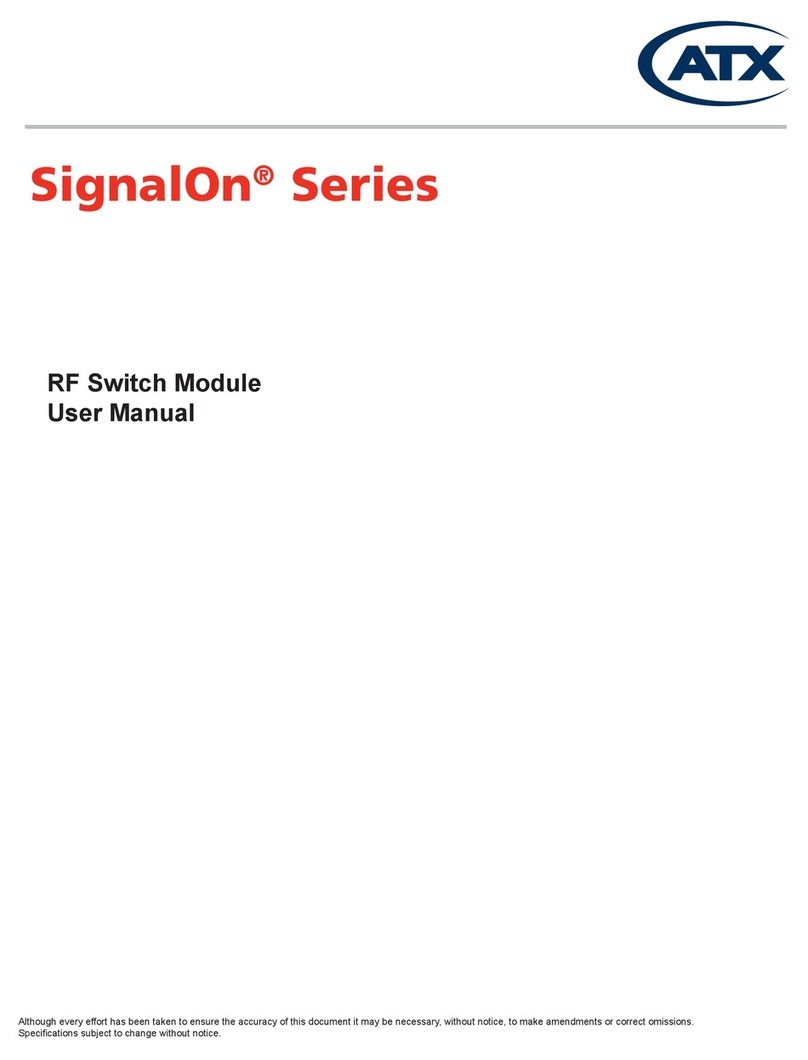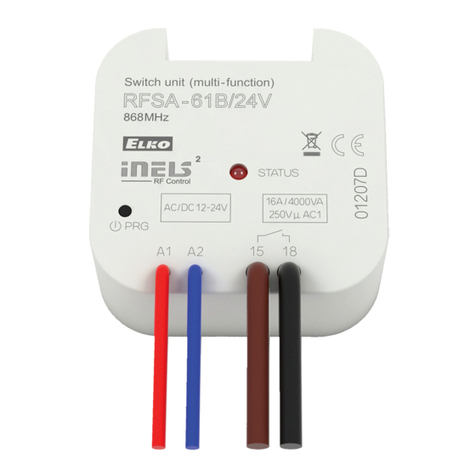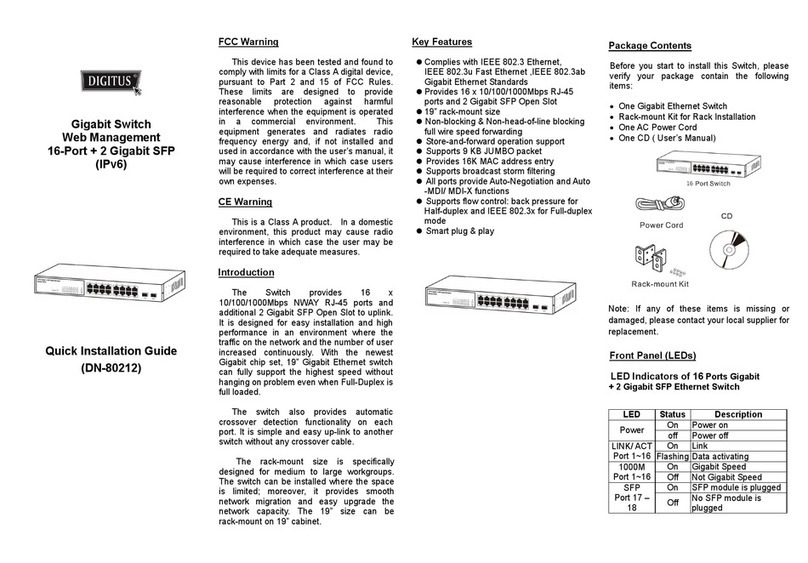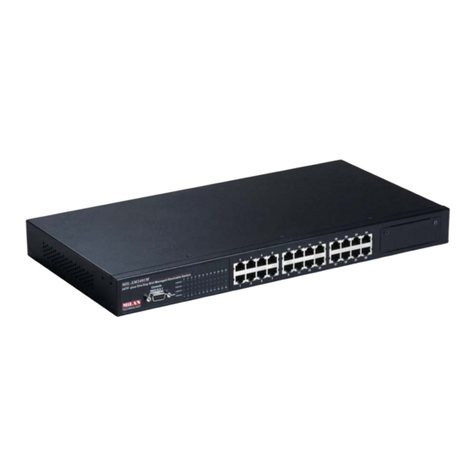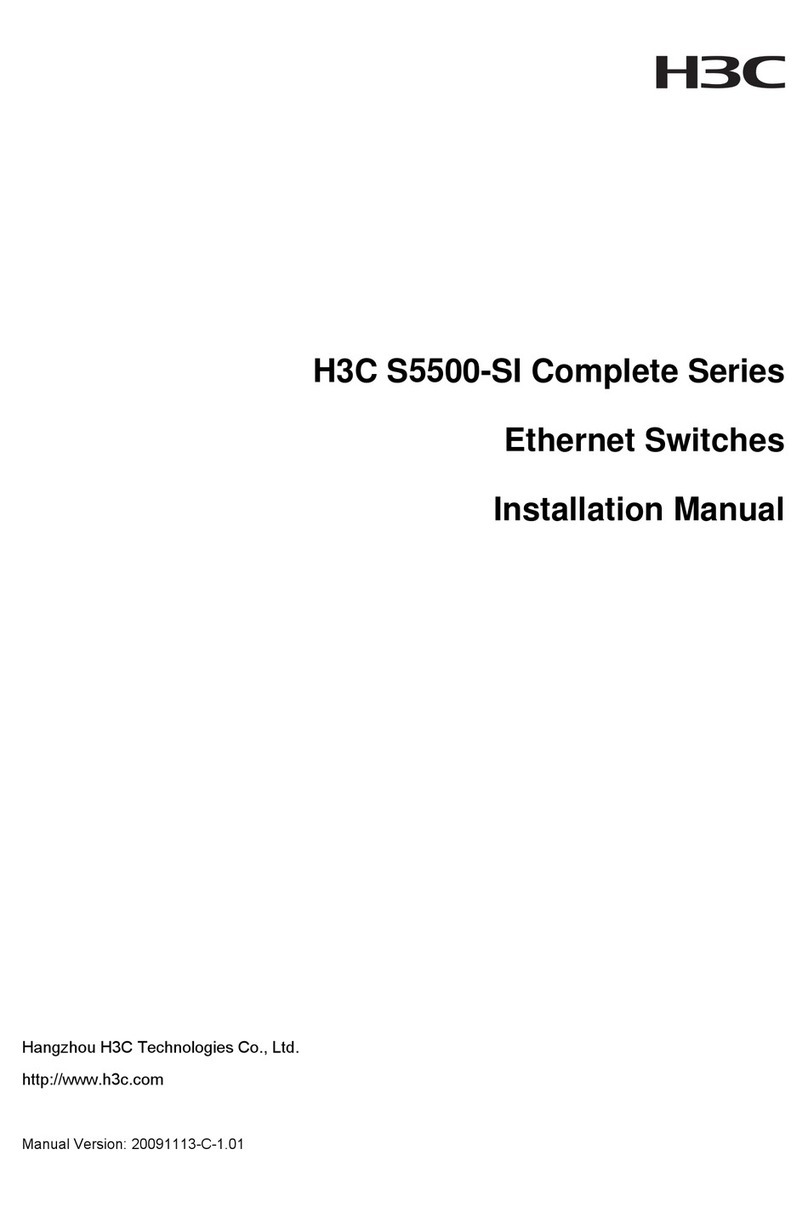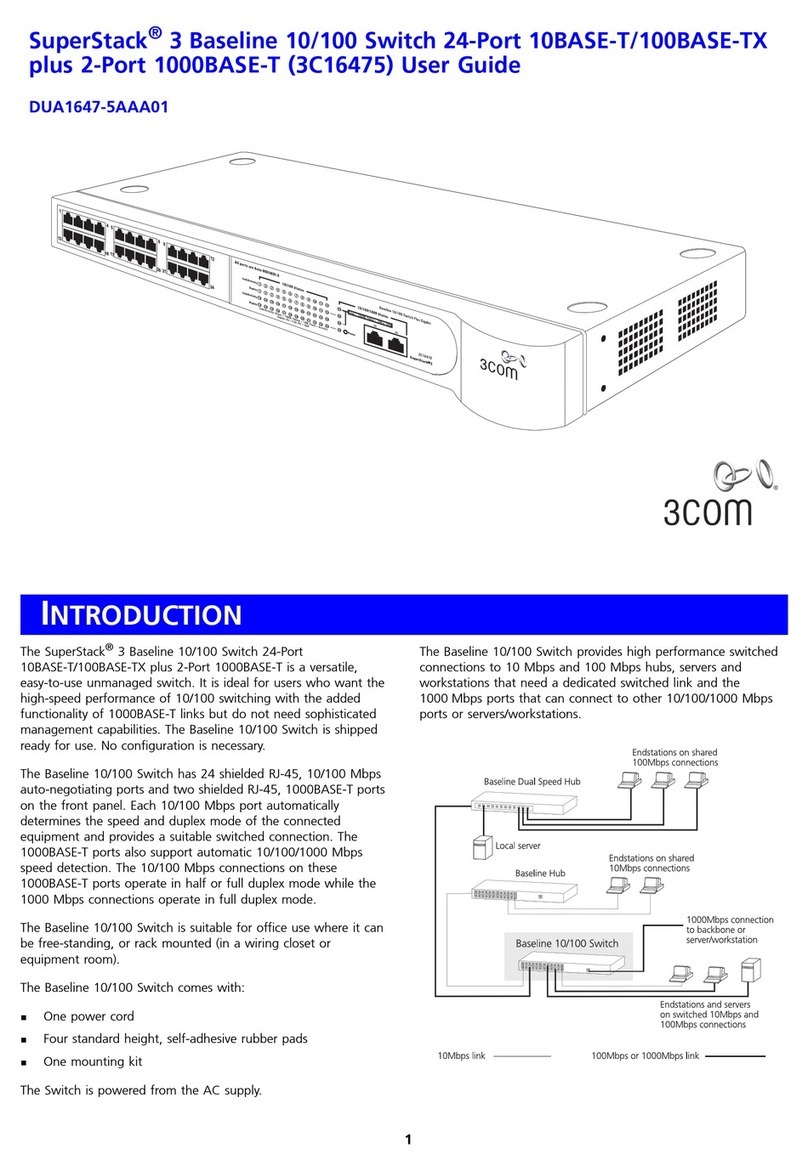ATX Q-Series Power BAQ-UP User manual

BAQ-UP™(QRED) Redundancy Switch
with Backup Amplier
Q-SERIES
®
Power
Installation & Operation Manual

Q-Series®is a registered trademark of ATX in the United States and/or other countries. Products or features contained herein may be covered by one or more U.S. or foreign
patents. Other non-ATX product and company names in this manual are the property of their respective companies
Although every effort has been taken to ensure the accuracy of this document it may be necessary, without notice, to make amendments or correct omissions.
Specications subject to change without notice.

Q-Series® Power – BAQ-UP™ (QRED) Redundancy Switch with Backup Amplier – Installation & Operation Manual i
TABLE OF CONTENTS
Page
1. DESCRIPTION OF INTERFACES ............................................................................................................. 1-1
2. DESCRIPTION OF OPERATION............................................................................................................... 2-1
2.1. Functional Schematic ........................................................................................................................ 2-2
3. SET-UP PROCEDURE .............................................................................................................................. 3-1
4. SPECIFICATIONS ..................................................................................................................................... 4-1
5. SERVICE & SUPPORT.............................................................................................................................. 5-1
5.1. Contact ATX Networks....................................................................................................................... 5-1
5.2. Warranty Information ......................................................................................................................... 5-1

ii Q-Series® Power – BAQ-UP™ (QRED) Redundancy Switch with Backup Amplier – Installation & Operation Manual
This page left intentionally blank.

Q-Series® Power – BAQ-UP™ (QRED) Redundancy Switch with Backup Amplier – Installation & Operation Manual 1-1
CHAPTER 1: DESCRIPTION OF INTERFACES
DESCRIPTION OF INTERFACES
1. Description of Interfaces
The BAQ-UP™ system (the system) has three compartments: the amplier compartment, the power supply compartment,
and the RF switch compartment.
Power Supply Compartment: (Located in the center portion of the chassis)
a) Rear: 24 VAC Input
24 VDC Input
b) Front: Green LED: 24V power on
Description: Both the 24 VAC and the 24 VDC can be connected at the same time to their designated terminal strips. A diode
“OR circuit” is located internally to select the source with the highest voltage. This allows you to provide redundant power to
this device by simultaneously connecting the 110 VAC / 24 VAC supplied transformer to the AC terminals when you also have
connected a 24 VDC source to the DC terminals. The green LED on the front indicates proper power supply operation.
RF Amplier Compartment: (Right side of chassis facing back)
a) Rear: Input (located immediately to the right of the AC/DC terminal block)
Output (located at the extreme right of the chassis)
b) Front: (with cover removed):
Input Test Point
Output Test Point
Gain Control
Slope Control
Input Pad (used to optimize the input to the amplier)
Description: This is referred to as the secondary amplier because your existing amplier is referred to as the primary
amplier. This internal amplier has a low-noise front-end and is comparable in signal quality to any primary amplier.
RF Switch Compartment: (Left side of chassis facing back)
a) Rear: Main Signal Input (located immediately left of AC/DC terminal block)
Output to Primary Amp
Output to Secondary Amp
Input from Primary Amp
Input from Secondary Amp
Main Output (on extreme left side facing back of chassis)
Description: If you are connecting this amp/switch as a redundant amp for your existing amplier, then move the input
from your existing amplier to the main signal input connector for this device. Connect a cable from the “Out to Primary”
connector to the input of your existing amplier. Move the output of your existing amplier to the “In from Primary” connector.
Connect a cable from “Out to Secondary” to the secondary amplier input located immediately to the right of the 24 VDC / 24
VAC terminal connectors. Connect another cable from “In from Secondary” to the secondary amplier output located to the
extreme right of the chassis as you are facing the rear of the chassis.
BAQ-UP™ Front View

1-2 Q-Series® Power – BAQ-UP™ (QRED) Redundancy Switch with Backup Amplier – Installation & Operation Manual
CHAPTER 1: DESCRIPTION OF INTERFACES
Alarms:
Alarm 1 (form C) for the primary amp
Alarm 2 (form C) for the secondary amp
Switch:
Remote control switch contacts
Description: The form C contacts may be used to switch any warning device that can provide a notication in case either
amplier has failed. The remote switch contacts may be used to force a switch from the primary to the secondary amplier.
b) Front: (with cover removed):
Green LED: — 5V power on
Yellow LED (warning):
• On: using reference levels stored in EEPROM
• Flashing (1/sec): Needs to set reference levels
• Flashing (3/sec): Switched to the secondary amplier by the remote control switch
Red LED (alarm):
• On: Primary amp failure
• Flashing (1/sec): Secondary amp failure
• Flashing (3/sec): Input signal low/primary amp and secondary amp failure
RF Detectors:
• Primary Amp RF Level Detector: DC level proportional to the primary amp RF output level
• Secondary Amp RF Level Detector: DC level proportional to the secondary amp RF output level
Test Points:
• Primary Amp DC Level
• Secondary Amp DC Level
Switches:
• Controller Reset: Restarts the microcontroller program
• Set Ref Levels: Stores the levels as references and start monitoring the amps

Q-Series® Power – BAQ-UP™ (QRED) Redundancy Switch with Backup Amplier – Installation & Operation Manual 2-1
CHAPTER 2: DESCRIPTION OF OPERATION
DESCRIPTION OF OPERATION
2. Description of Operation
RF output levels of both the primary and the secondary ampliers are sampled and this sample is converted to a voltage
value. At initial power on, the system is switched to run on the primary amp. The yellow LED will ash slowly indicating the
reference levels need to be set. By pressing the “Set Reference Levels” switch, the microcontroller samples the output values
of both the primary amp and the secondary amp and stores the values as references. These values will be used to compare
with the sampled output values of both ampliers to conrm proper levels. At any time during the operation, one can always
press the “Controller Reset” switch to reset the microcontroller program and store the new sampled values.
The remote control switch is activated by closing the remote control contacts. Activation (closing the contacts) effects a switch
to the secondary amplier. Removing the contact closure will cause a switch back to the primary amplier. When the system
is switched to the secondary amp, the yellow LED will ash quickly to warn the user. The remote control switch can change
the system back and forth from the primary amp to the secondary amp by opening/closing the remote control contacts. The
system detects the remote control switch periodically to check its state. If a change in status is detected on the remote control
switch, the system will set to the primary or secondary amp according to the state of the contact closure.
During normal operation, if both outputs are within 3 dB (factory programmable) of the reference values, no action will be
taken. If the primary amp is down 3 dB or more and the secondary amp is not, the system considers the primary amp failed
and will switch to the secondary amp, set Alarm 1, and set the red LED on. The system needs to be reset (by the controller
reset push buttom on the front of the unit) at this point to get back to normal operation (after correcting the levels of the
primary amplier).
If both outputs are down 3 dB or more, the system considers the input is low and will set the red LED ashing quickly and set
the alarms. The system needs to be reset at this point to get back to normal operation (after correcting the input levels).
If the system is running on the primary amp and the secondary amp level is down 3 dB or more, the system considers the
secondary amp failed and will set Alarm 2 and set the red LED ashing slowly. The system should be reset at this point to get
back to normal operation (after making corrections to the secondary amp).
If the primary amp has failed and the microcontroller has switched to the secondary amp, the microcontroller can not perform
any additional switches because the detectors are unable to sample any signal when the secondary amplier is activated.
The system needs to be reset at this point to get back to normal operation (after correcting the primary amplier signal level).
The remote control switch is non-functional in this situation since a switch can not be forced to a failed primary amplier.
The total power within the bandwidth from the primary amplier coming into the RF switch compartment should not exceed 50
dBmV per channel. If only a portion of the TV channels is used, the maximum signal level per channel could be higher than
50 dBmV and the minimum signal level should be higher than 20 dBmV.
The recommended primary amplier output level is between 20 dBmV and 50 dBmV with all the TV channels loaded within
the passband. The secondary amplier operates 20 dB lower than the primary amplier during normal operation.
The system also stores the reference levels to the EEPROM on the microcontroller. When a power outage occurs, the system
can retrieve the reference levels from the EEPROM after the power comes back on. After power on, the system waits for
three minutes for the user to press the “Set Reference Levels” switch and will retrieve the levels from EEPROM if the switch is
not pressed. The system will also warn the user with a steady yellow LED light when it’s using the retrieved reference levels.
The user can press “Controller Reset” switch and then press the “Set Reference Levels” switch to overwrite the retrieved
levels. Please notice that when the user rst gets the system, there are reference levels stored into the EEPROM while the
system was tested in the factory.
During normal operation, Alarm 1 and Alarm 2 are energized (i.e. the Normally Open contact is connected to the Common
contact). This conguration ensures that the user be alerted when power goes down.

2-2 Q-Series® Power – BAQ-UP™ (QRED) Redundancy Switch with Backup Amplier – Installation & Operation Manual
This wiring conguration is for a hub site with a primary
input and a backup input. In addition to the wiring
method, the microprocessor is programmed at ATX to
switch to the secondary input when the primary input falls
below the threshhold level. When the primary level is
restored within normal range, the QRED will switch back
to the primary input immediately. This is an advantage in
unmanned hub sites in that no level resetting is required
after a primary path failure.
This wiring conguration is for a headend site with an amplier that needs
backup protection. This typically is used in the signal path where an amplier
failure is not acceptable. The QRED switch is programmed to switch to the
secondary amplier when the cumulative RF output of the primary amplier falls
below a programmed level, usually a 3 dB drop. This output is measured within
a frequency range from 120-220 MHz. The microprocessor controlled switch
can be programmed to switch within the end users specications for timing and
RF levels. Once a switch is made to the secondary amplier, the signal path
continues through the secondary amplier until a technician restores the
primary amplier signal levels and resets the switch manually.
SECONDARY (BACKUP) RECEIVER PRIMARY (MAIN) RECEIVER
OUT
TO
PRIMARY
IN
FROM
PRIMARY
INPUT
DETECTOR
OUTPUT
SIGNAL OUT
DETECTOR
IN
FROM
SECONDARY
OUT
TO
SECONDARY
JUMPER
NC
NO
C
NC
NC
NC
NO
NO NO
C
CC
SIGNAL IN
PRIMARY (MAIN) AMP
OUT
TO
PRIMARY
IN
FROM
PRIMARY
INPUT
DETECTOR
OUTPUT
SIGNAL OUT
DETECTOR
IN
FROM
SECONDARY
OUT
TO
SECONDARY
SECONDARY (BACKUP) AMP
NC
NO
C
NC
NC
NC
NO
NO NO
C
CC
2.1 Functional Schematic
CHAPTER 2: DESCRIPTION OF OPERATION

Q-Series® Power – BAQ-UP™ (QRED) Redundancy Switch with Backup Amplier – Installation & Operation Manual 3-1
CHAPTER 3: SET-UP PROCEDURE
SET-UP PROCEDURE
3. Set-up Procedure
1. Remove the cover.
2. Connect input signal to the “Input” of the RF switch compartment.
3. Connect the “Output to Secondary Amp” of the RF switch compartment to the “Input” of the amplier compartment.
4. Connect the “Output” of the amplier compartment to the “Input from Secondary Amp” of the RF switch compartment.
5. Connect the “Output to Primary Amp” of the RF switch compartment to the “Input” of an external amplier.
6. Connect the “Output” of the external amplier to the “Input from Primary Amp” of the RF switch compartment.
7. Connect signal strength meter to the “Output” of the RF switch compartment.
8. Adjust the external amplier to get the desired level.
9. Connect 24 VDC or 24 VAC to the appropriate input of the power supply compartment.
10. Push the “Set Ref. Levels” switch.
11. Connect the “+” and “-” contact of the remote switch with a jumper to force the microcontroller switch to the secondary
amplier.
12. Adjust the gain and slope control in the amplier compartment to get desired signal level.
13. Remove the jumper from the remote switch.
14. Remove the signal strength meter from the “Output” of the RF switch compartment.
15. Connect the “Output” of the RF switch compartment to the desired output cable.
16. Use a voltmeter to measure the DC voltage on the “Secondary Amp DC Level” test point. Adjust the variable attenuator
on the secondary amp level detector to get the voltage to a nominal 2.5V if possible. (For lower RF levels, the detected
DC voltage may not reach 2.5 VDC. This is normal).
17. Use the voltmeter to measure the DC voltage on the “Primary Amp DC Level” test point. Adjust the variable attenuator
on the primary amp level detector to get the voltage close to the voltage on the “Secondary Amp DC Level” test point.
18. Put the cover back on.
19. Press “Controller Reset”.
20. Press “Set Ref Levels”.
SET UP PROCEDURE IS COMPLETE

3-2 Q-Series® Power – BAQ-UP™ (QRED) Redundancy Switch with Backup Amplier – Installation & Operation Manual
CHAPTER 3: SET-UP PROCEDURE
This page left intentionally blank.

Q-Series® Power – BAQ-UP™ (QRED) Redundancy Switch with Backup Amplier – Installation & Operation Manual 4-1
CHAPTER 4: SPECIFICATIONS
SPECIFICATIONS
4. Specications

4-2 Q-Series® Power – BAQ-UP™ (QRED) Redundancy Switch with Backup Amplier – Installation & Operation Manual
CHAPTER 4: SPECIFICATIONS
This page left intentionally blank.

Q-Series® Power – BAQ-UP™ (QRED) Redundancy Switch with Backup Amplier – Installation & Operation Manual 5-1
CHAPTER 5: SERVICE & SUPPORT
SERVICE & SUPPORT
5. Service & Support
5.1 Contact ATX Networks
Please contact ATX Technical Support for assistance with any ATX products. Please contact ATX Customer Service to obtain
a valid RMA number for any ATX products that require service and are in or out-of-warranty before returning a failed module
to the factory.
TECHNICAL SUPPORT
Tel: (905) 428-6068
Toll Free: (800) 565-7488 (USA & Canada only)
► Press *3 for Technical Support
► Then press 1 for Digital Video Products (DVIS, DigiVu, UCrypt, etc.)
► OR, press 2 for All Other Products
CUSTOMER SERVICE
ATX Networks
1-501 Clements Road West
Ajax, ON L1S 7H4 Canada
Tel: (905) 428-6068
Toll Free: (800) 565-7488 (USA & Canada only)
► Press *1 for Customer Service
Fax: (905) 427-1964
Toll Free Fax: (866) 427-1964 (USA & Canada only)
Web: www.atxnetworks.com
Email: [email protected]
5.2 Warranty Information
All of ATX Networks’ products have a 1-year warranty that covers manufacturer’s defects or failures.

Page 4 of 4
Printed in Canada Rev. 07/15 (ANW0849)
1-501 Clements Road West, Ajax, ON L1S 7H4 Canada
Tel +1 (905) 428-6068 Toll Free +1 (800) 565-7488
Fax +1 (905) 427-1964 Toll Free Fax +1 (866) 427-1964
www.atxnetworks.com [email protected]
Table of contents
Other ATX Switch manuals
Popular Switch manuals by other brands
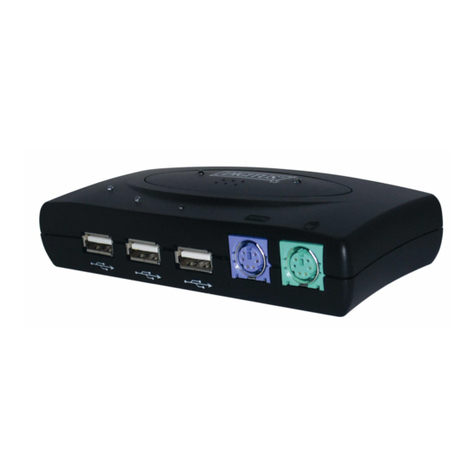
Digitus
Digitus DC-11201-1 user manual

Endress+Hauser
Endress+Hauser OFTE20 operating instructions
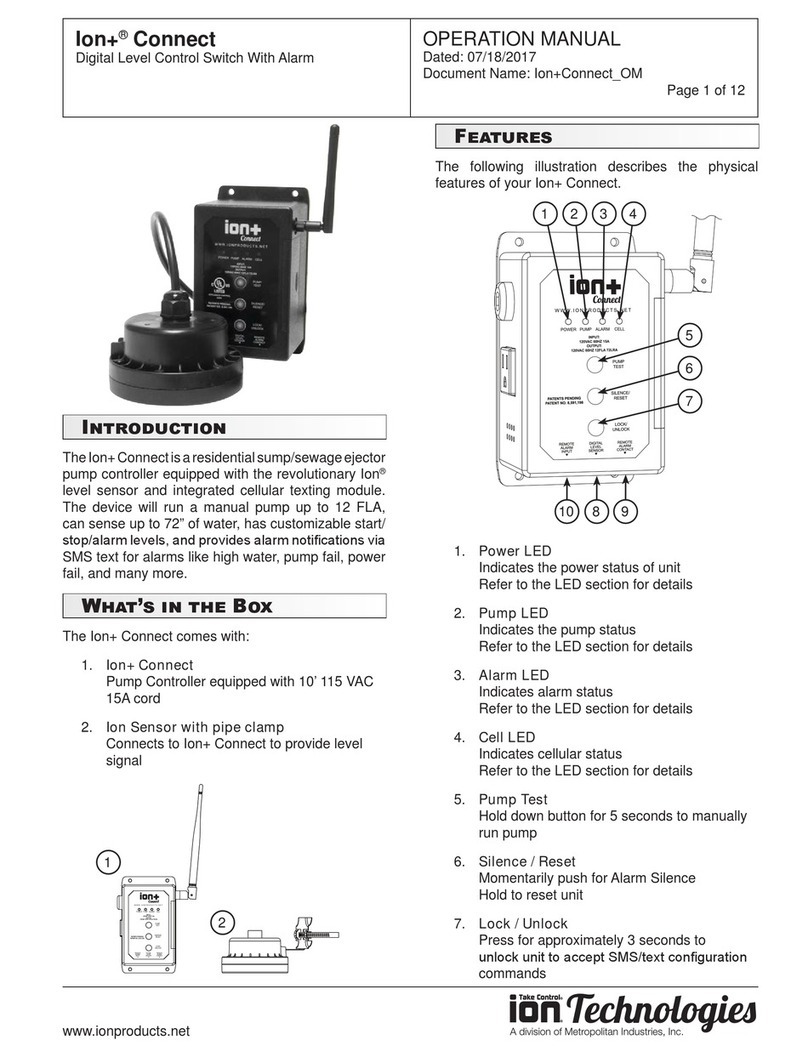
Ion Technologies
Ion Technologies Ion+ Connect Operation manual

NETGEAR
NETGEAR 700 Series Software user's guide
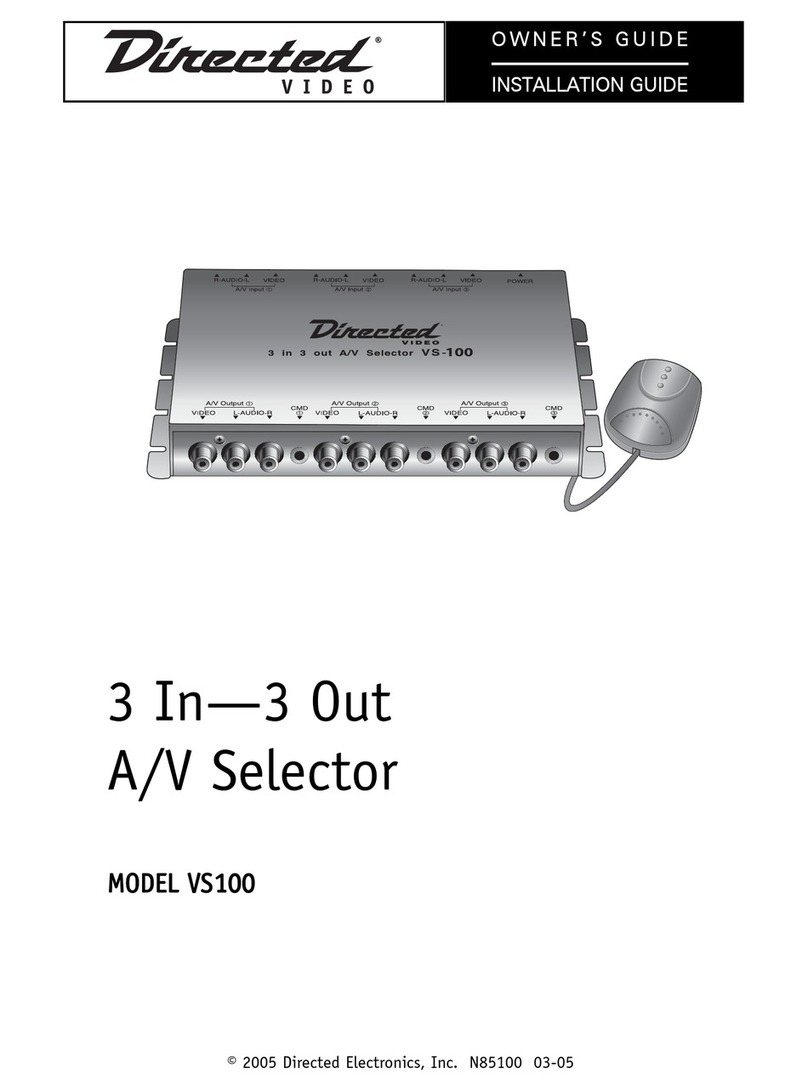
Directed Electronics
Directed Electronics VS100 owner's guide

Airespace
Airespace 4012 Quick installation guide
